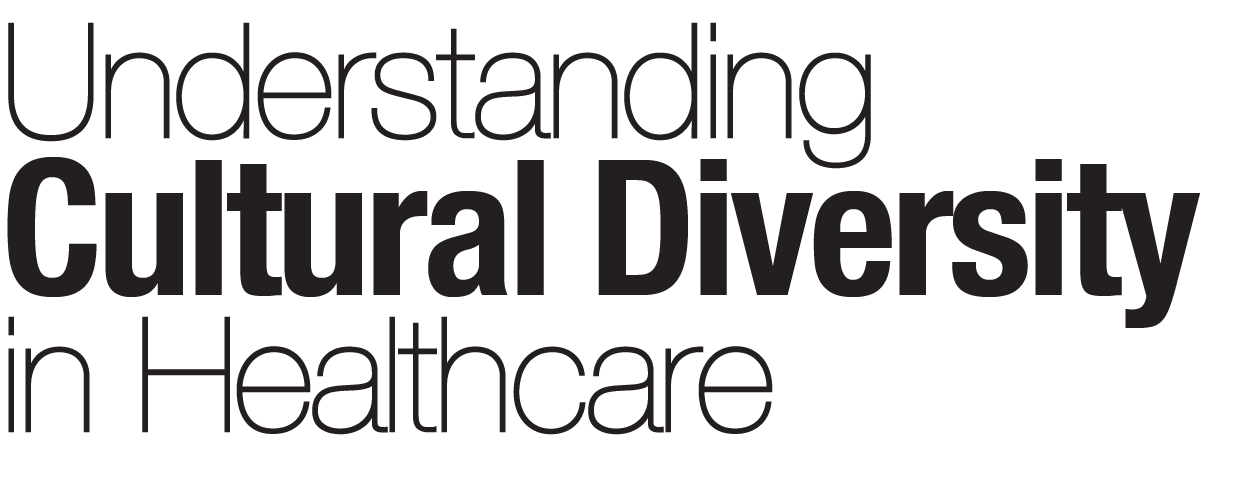
Caution: These are broad generalizations and should not be used to stereotype any individuals. They are most applicable to the least acculturated members. Hindus, Sikhs, and Muslims from India, Pakistan, Bangladesh, Sri Lanka, and Nepal are included in this group.
Values, World View and Communication
Hindus and Sikhs may believe illness is the result of karma, due to actions in a past life. Those who follow Ayurvedic medicine may see it as resulting from an imbalance in bodily humors.
Patients may not express feelings openly, so observe facial expressions closely.
Direct eye contact may be considered rude or disrespectful, especially among the elderly.
Silence often indicates acceptance or approval. With some South Asians, a side-to-side head bob may indicate agreement or uncertainty. An up-and-down nod may indicate disagreement, while acknowledging what the speaker is saying.
Some patients may not want to sign consents, as they may consider health care professionals to be the authorities and thus may prefer to have them make the decisions.
Time Orientation
This group is generally future-oriented. Some, including some Pakistanis, may not be oriented to “clock time.”
Pain
These patients generally tend to be stoic, except during childbirth.
There is a great concern regarding drug addiction and thus there may be a reluctance to take pain medication. When pain medication is necessary, explain why. Muslims may not want narcotics for anything other than severe pain.
Some Pakistani Muslims may prefer injections to pills.
Family & Gender Issues
Women are often modest and may prefer a gown that provides better coverage. Many may prefer female caregivers as well.
Male health care providers should not shake hands with a female unless she offers her hand first.
Close female family members may insist on remaining with the patient. Family members may take over the activities of daily living for the patient, such as feeding, grooming, etc. Because of this, do not insist the patient practice self-care unless medically necessary.
The father or eldest son usually has decision-making power, but generally family members are consulted before decisions are made. Husbands may answer questions addressed to the wife.
Pregnancy & Birth
Pregnant Hindu women are often encouraged to eat nuts, raisins, coconuts, and fruits in the belief that doing so will lead to a healthy, beautiful baby. Dried ginger powder, celery seeds, nuts, and puffed lotus seeds may be given to a new Hindu mother in an effort to cleanse her system and restore her strength.
Moaning and screaming are acceptable during childbirth.
Traditionally, female relatives served as labor partners, though it is becoming more common for the husband to assist.
South Asian women may practice a post-partum lying-in period. While they are expected to feed the baby, everything else is done for them. Traditionally, female relatives take over. If none are around, the patient may expect nurses to do this.
Baby naming may be delayed for a week among Hindu Indians. It should not be misinterpreted as a lack of bonding.
End of Life
When a patient is diagnosed as terminal, family members may wish to shield him or her from that fact. On admission (or before the need arises, if possible) ask patients to identify how much information they want to be given regarding their condition, or to whom the information should be provided.
Most family members will not allow autopsy unless absolutely necessary.
Health Related Practices
Use of home and folk remedies is common, but may not be disclosed to physicians. Explain in a nonjudgmental way that most patients try home remedies first and why it is important you know what self-treatment regimens they have tried.
Sikhs are required not to cut their hair or shave their beards. Their hair will usually be worn in a turban. Consider this before cutting or shaving any hair in preparation for surgery.
Observant Hindus will generally not eat meat or fish; some may not eat eggs. Observant Muslims will not eat pork.
Muslims may not take medications, eat, or drink from sunrise to sunset during the month of Ramadan. This period of fasting, self-sacrifice, and introspection is based on the Islamic calendar, and thus occurs at a different time each year.
Those who practice Ayurvedic medicine (Hindus, Sikhs, and some Muslims) classify food in terms of hot or cold, based on qualities inherent in the food rather than on its temperature. “Hot” foods, including meat, fish, eggs, yogurt, honey, and nuts, are encouraged for “cold” conditions, such as fever or in anticipation of surgery, especially in winter. “Cold” foods like milk, butter, cheese, fruits, and vegetables are encouraged during the summer and for “hot” conditions, including pregnancy.
Note: Some material adapted from Zachariah, R. (2005) East Indians. In J. G. Lipson and S .L. Dibble, eds., Culture and Clinical Care, 146-62. San Francisco: UCSF Nursing Press; Hashwani, S.S. (2005) Pakistanis, in J. G. Lipson and S. L. Dibble, eds, Culture & Clinical Care, 360-374. San Francisco: UCSF Nursing Press; and Rajwani, R. J. (1996) South Asians. In J. G. Lipson, S .L. Dibble, and P. A. Minarik, eds., Culture and Nursing Care: A Pocket Guide, 264-79. San Francisco: UCSF Nursing Press.
